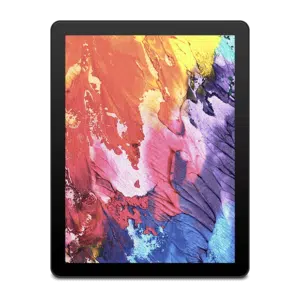The Environmental Benefits of Using Electronic Paper Displays
The Environmental Benefits of Using Electronic Paper Displays
Blog Article
Display engineering is now an integral element of our everyday lives, showing in sets from smartphones and e-readers to large-scale promotion panels. On the list of diverse array of E ink computer display, OLED (Organic Light-Emitting Diodes), and LED (Light-Emitting Diodes) have appeared as some of the very most widely mentioned options. While each kind acts a unique special function, their variations in features, efficiency, and use instances cause them to become suited to specific applications. Let's take a closer consider the crucial characteristics of the display technologies.
Electronic Paper displays (ePaper)
Electronic Paper displays, also referred to as ePaper or Electronic Ink displays, are designed to mimic the looks and readability of standard Ink on paper. That engineering utilizes small microcapsules comprising charged dark and white contaminants halted in a clear fluid. When an electric subject is used, the particles proceed to either side of the supplement, producing a visible image. The picture remains static until another electric field is used, which makes it well suited for showing text-based material such as publications, newspapers, and e-readers.

Among the major benefits of ePaper displays is their low power consumption. Unlike standard LCD
Knowledge Electronic Paper displays
An electronic Paper display (ePaper) mimics the appearance of Ink on paper. Unlike traditional displays, ePaper utilizes their capability to reveal surrounding light rather than emitting their own. That engineering not merely minimizes attention stress but also gives unparalleled readability in sunlight, making it well suited for e-readers and electronic signage solutions.
One standout function of ePaper displays is their amazingly low energy consumption. Because they only use power when adjusting content, ePaper screens are highly effective and suitable for battery-powered devices. Nevertheless, their refresh charges are slower compared to OLED and LED displays, limiting their applicability to fixed or minimally active content.
OLED displays
OLED displays are known for their gorgeous visual quality, providing lively colors, heavy blacks, and outstanding contrast. Each pixel in an OLED display emits its own gentle, reducing the requirement for a backlight. This not merely permits finer, more lightweight styles but in addition benefits in better power performance compared to LED using scenarios.
One crucial advantageous asset of OLED displays is their flexibility. They may be produced in curved or collapsible models, making them common in cutting-edge smartphones and wearable devices. Nevertheless, OLED screens have problems, such as for example susceptibility to burn-in and faster lifespans compared to different technologies.
LED displays
LED displays, the most common of the three, rely on a backlit process to mild their pixels. Whilst not as creatively striking as OLED E ink sign, LEDs are extremely sturdy, long-lasting, and cost-effective. These qualities make them suited to a larger array of programs, including TVs, pc displays, and outdoor advertising.
LED displays an average of conduct effectively in terms of brightness, making them the ideal choice for surroundings with large surrounding light. Nevertheless, they fall short in reaching exactly the same heavy distinction and color reliability as OLED technology.

Ultimate Contrast
When determining between ePaper, OLED, and LED displays, the decision depends mainly on the intended purpose. For fixed content like examining or signage, ePaper excels having its low power application and high visibility in organic light. OLED shines in purposes wherever lively colors and mobility are paramount. Meanwhile, LED remains a reliable and cost-efficient alternative for a variety of general-purpose needs.
Each display engineering provides anything special to the dining table, ensuring that there's a perfect option for every situation. Understanding these differences might help people and firms produce knowledgeable choices that suit their specific display requirements. Report this page